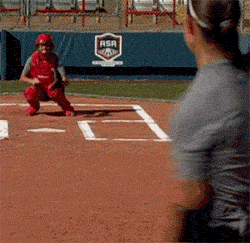recently at a pitching clinic...i caught a real rise ball from an elite pitcher named Joe Tucker.
It was like a was watching a cartoon. The ball would literally jump when it got within 10 feet of me. I really could see it hop when he slowed it down to around 55, he could also zing it around 65-70. it was like there was a air pocket underneath. I wouldn't believe it if I hadn't seen it with my own eyes. The amount of spin was amazing!! He is a real magician with the ball.
It was like a was watching a cartoon. The ball would literally jump when it got within 10 feet of me. I really could see it hop when he slowed it down to around 55, he could also zing it around 65-70. it was like there was a air pocket underneath. I wouldn't believe it if I hadn't seen it with my own eyes. The amount of spin was amazing!! He is a real magician with the ball.







